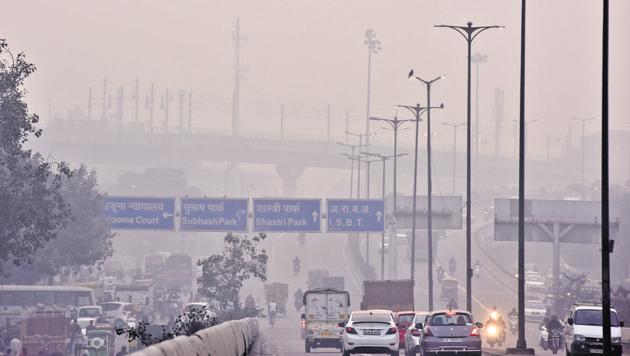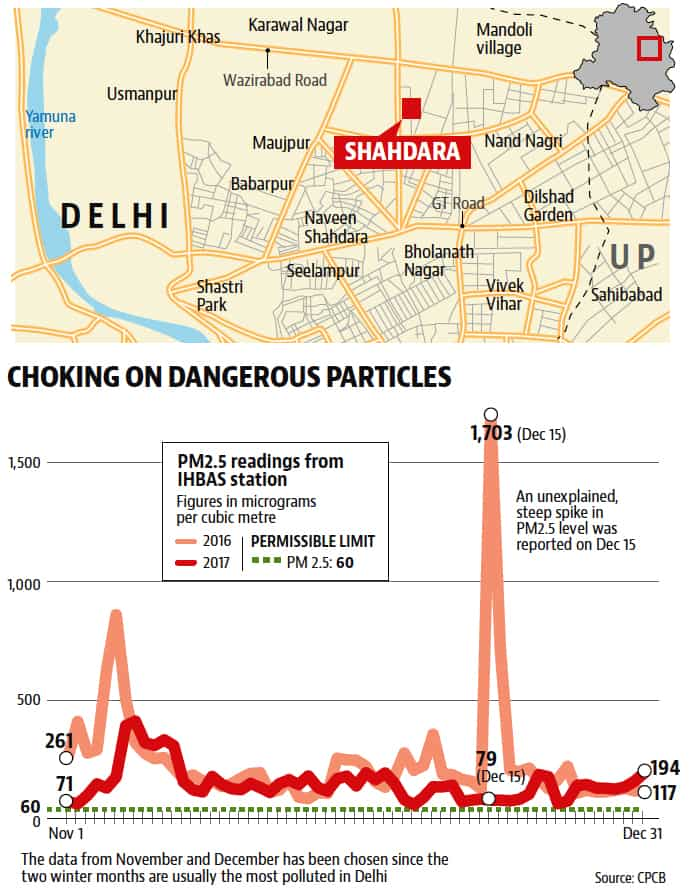Delhi’s pollution hotspots: Vehicles and factories suffocate Shahdara
Home to over 60,000 families, Shahdara is one of the most densely populated districts of Delhi, also one of the most polluted
Shahdara residents recall their experience in the week ending November 12 as walking around with chilli powder in their eyes and throats. Others remember smog so thick that they dared not venture out, some children were placed under house-arrest, while others considered leaving Delhi altogether.

Since November, air quality in Shahdara has not been within permissible limits for a single day.
Shahdara sits on the north-eastern edge of Delhi, bordering Uttar Pradesh. Despite being classified as a “nonconforming cluster of industrial concentration” in the Delhi Master plan, the subdistrict is home to about 60,000 families, with almost 40,000 children under the age of six. Its population grew 1.5 times in the decade ending 2011, according to Census data.
Like most neighbourhoods in Delhi, Shahdara’s planning has not kept up with population growth. “Delhi wasn’t made for these many people or vehicles,” said D Saha, scientist at the Central Pollution Control Board’s air lab. “We have three times the population the city was built for and four times the number of vehicles.”
Road dust and vehicular emissions compound the problem as the neighbourhood is crisscrossed by some of the busiest roads in Delhi-NCR. NH-9 that connects Malout in Punjab to Pithoragarh in Uttarakhand, and State Highway-57 that connects Delhi to Yamunotri in Uttarakhand run through Shahdara. A stretch of NH-24 that runs south of Shahdara carries much of the traffic headed to Meerut from Delhi, as does a stretch of NH-44, which is a part of the historical Grand Trunk Road.
People living in Nand Nagri and New Seemapuri suffer the most, especially at night when the trucks start moving on GT Road. “People sit outside the many, mostly mechanical repair shops by the roadside where there is so much dust that breathing becomes difficult even on a normal day,” said Harish Kumar, 39, who has been living in the area for nearly 25 years and runs a printing store.

“I have asthma and the wheezing worsens indoors because it’s cold inside. I used to spend my afternoons sitting in the sun, but cannot now because of the dust and pollution,” said Savita Devi, 60, a DDA colony-resident for 16 years.
With people illegally adding rooms to their flats and renting them out, the colony’s population has gone up three to four times over the past two decades. “This is the problem in Seemapuri, Nand Nagri, Seelampur — families and rents have risen and now each house has 20-30 residents, compared to six-seven people a decade ago,” said Satish Verma, 47, who works at the Vivek Vihar ITI, who has lived here for 22 years.
Renovations and additions mean constant unplanned construction. “Who keeps a check on the dust and pollution when a house is being constructed? Every day, there are houses being broken down and reconstructed, with people encroaching pavements and public land, causing traffic jams and congestion,” said Verma.
Industries, both legal and illegal, a constant flux of vehicles from outside city borders, and perpetual construction compound air pollution. In 1996, the Supreme Court directed Delhi government to relocate industries in central residential areas remote places. It took the Delhi government 20 years to complete that allocation process, but the industries are there.
“Why are you allowing people to live next to industrial areas?” said MC Mehta, lawyer and activist. “They only plan well on paper. They should have thought about what would happen by the time they finish the relocation.”
Unregulated construction has accompanied industries and growing population. In 2015, the East Delhi Municipal Corporation fined 33 under-construction commercial and residential properties for polluting the air. “None of the fines have made a difference,” Sanjay Upadhyay, an environmental lawyer, said.
“Development always wins against environment,” Saha said, explaining how Beijing appears to be tackling the problem better by not allowing migrants to settle in the city.
The air pollution is more likely to drive residents out. “If this continues, we will think about leaving Delhi,” said Mukesh Kumar, an advocate, who bought masks for his entire family this November.



